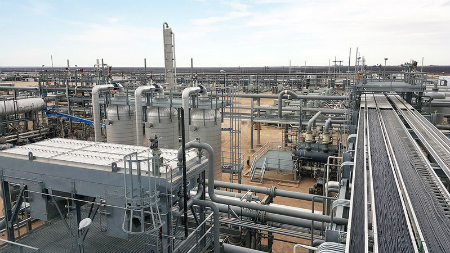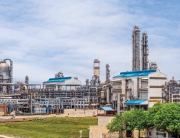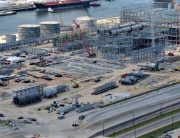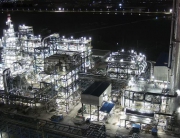Navitas Midstream Partners LLC, The Woodlands, Tex., has let a contract to Honeywell UOP LLC to deliver a 200-MMcfd cryogenic natural gas processing plant the operator will use to extract NGLs from gas produced in several counties across the Permian basin.
Honeywell UOP’s scope of work under the contract will include design and supply of proprietary equipment for a UOP modular cryogenic plant, including refrigeration and dehydration units, that will be customized for high-rate recovery of NGLs from the Permian’s NGL-rich feed gas composition, the service provider said on May 18.
The new plant will use UOP-owned Ortloff recycle split vapor (RSV) technology to increase recovery of more ethane and propane, UOP said.
Further details regarding the project, including a timeframe for startup, were not disclosed.
Existing processing capacity
Navitas currently owns and operates nearly 1,500 miles of gas-gathering pipelines, 660 MMcfd of gas processing capacity, and about 210,000 hp of field compression in the Midland basin of the West Texas Permian basin to serve producers in Midland, Martin, Howard, Glasscock, Upton, and Reagan Counties.
Located about 18 miles southeast of Midland, Tex., near the Midland-Glasscock county line, the 660-MMcfd Midland basin processing complex is made up of four processing trains at three separate plant sites:
- The Newberry plant, which includes Newberry Train 1, a 60-MMcfd RSV cryogenic plant commissioned in March 2017, as well as Newberry Train 2, a 200-MMcfd gas subcooled process (GSP) cryogenic processing plant commissioned in April 2018. Both trains include inlet carbon dioxide (CO2) and hydrogen sulfide (H2S) treating capabilities, with the combined Newberry plant also equipped with nitrogen rejection unit.
- The Taylor plant—commissioned in June 2019—houses a 200-MMcfd GSP cryogenic processing train. This plant also includes inlet CO2 and H2S treating capabilities, as well as a nitrogen rejection unit.
- The Trident plant, which features a 200-MMcfd RSV cryogenic processing plant commissioned in June 2020. Also equipped with inlet CO2 and H2S treating capabilities, this plant is scheduled to receive a nitrogen rejection unit sometime in 2021, according to the operator’s website.
Source: www.ogj.com







